Order Vibrionales Scientific name Vibrio Rank Genus | Phylum Proteobacteria Family Vibrionaceae Higher classification Vibrionaceae | |
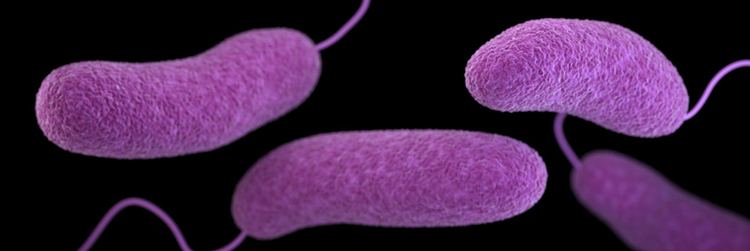 | ||
Lower classifications Vibrio parahaemolyticus, Vibrio harveyi, Vibrio alginolyticus, Vibrio anguillarum, Vibrio natriegens | ||
Vibrion bacterya full album
Vibrio is a genus of Gram-negative bacteria, possessing a curved-rod shape (comma shape), several species of which can cause foodborne infection, usually associated with eating undercooked seafood. Typically found in salt water, Vibrio species are facultative anaerobes that test positive for oxidase and do not form spores. All members of the genus are motile and have polar flagella with sheaths. Vibrio species typically possess two chromosomes, which is unusual for bacteria. Each chromosome has a distinct and independent origin of replication, and are conserved together over time in the genus. Recent phylogenies have been constructed based on a suite of genes (multilocus sequence analysis).
Contents
- Vibrion bacterya full album
- Pathogenic strains
- Treatment
- Vibrio gastroenteritis
- Noncholera Vibrio infections
- Other strains
- Flagella
- References
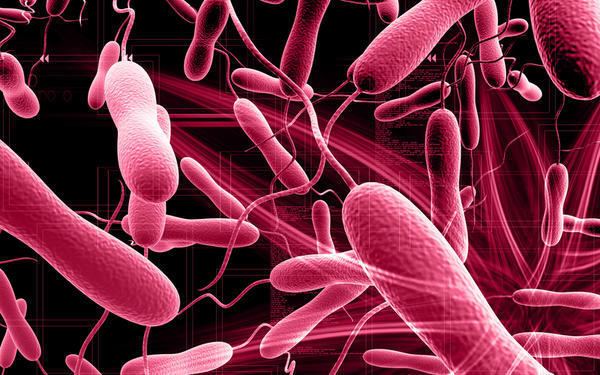
O. F. Müller (1773, 1786) described eight species of the genus Vibrio (included in Infusoria), three of which were spirilliforms. Some of the other species are today assigned to eukaryote taxa, e.g., to the euglenoid Peranema or to the diatom Bacillaria. However, Vibrio Müller, 1773 became regarded as the name of a zoological genus, and the name of the bacterial genus became Vibrio Pacini, 1854. Filippo Pacini isolated micro-organisms he called "vibrions" from cholera patients in 1854, because of their motility.
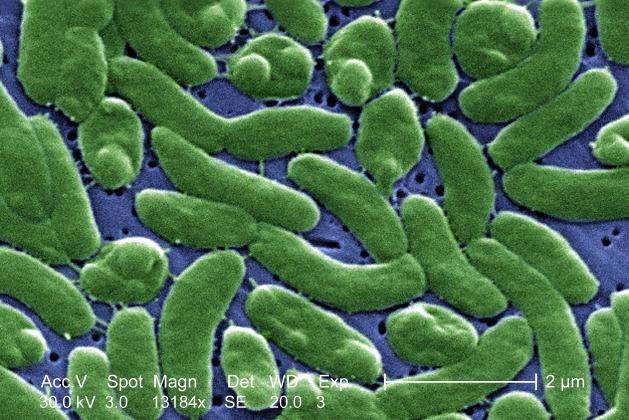
Pathogenic strains
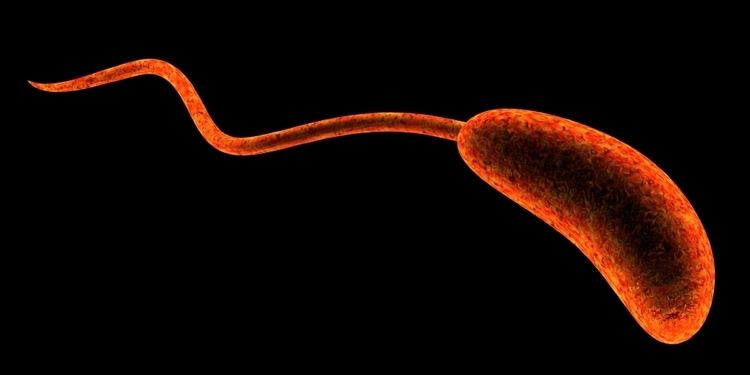
Several species of Vibrio are pathogens. Most disease-causing strains are associated with gastroenteritis, but can also infect open wounds and cause septicemia. They can be carried by numerous marine animals, such as crabs or prawns, and have been known to cause fatal infections in humans during exposure. Pathogenic Vibrio species include V. cholerae (the causative agent of cholera), V. parahaemolyticus, and V. vulnificus. V. cholerae is generally transmitted by contaminated water. Pathogenic Vibrio species can cause foodborne illness (infection), usually associated with eating undercooked seafood. The pathogenic features can be linked to quorum sensing where bacteria are able to express their virulence factor via their signalling molecules.
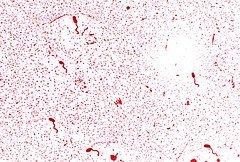
V. vulnificus outbreaks commonly occur in warm climates and small, generally lethal, outbreaks occur regularly. An outbreak occurred in New Orleans after Hurricane Katrina, and several lethal cases occur most years in Florida. As of 2013 in the United States, Vibrio infections as a whole were up 43% when compared with the rates observed in 2006-2008. V. vulnificus, the most severe strain, has not increased. Foodborne Vibrio infections are most often associated with eating raw shellfish.

V. parahaemolyticus is also associated with the Kanagawa phenomenon, in which strains isolated from human hosts (clinical isolates) are hemolytic on blood agar plates, while those isolated from nonhuman sources are not hemolytic.
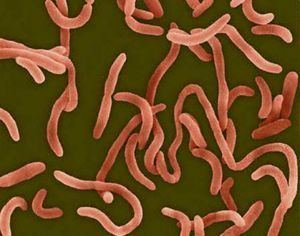
Many Vibrio species are also zoonotic. They cause disease in fish and shellfish, and are common causes of mortality among domestic marine life.
Treatment
Medical care depends on the clinical presentation and the presence of underlying medical conditions.
Vibrio gastroenteritis

Because Vibrio gastroenteritis is self-limited in most patients, no specific medical therapy is required. Patients who cannot tolerate oral fluid replacement may require intravenous fluid therapy.

Although most Vibrio species are sensitive to antibiotics such as doxycycline or quinolones, antibiotic therapy does not shorten the course of the illness or the duration of pathogen excretion. However, if the patient is ill and has a high fever or an underlying medical condition, oral antibiotic therapy with doxycycline or quinolone can be initiated.
Noncholera Vibrio infections
Patients with noncholera Vibrio wound infection or septicemia are much more ill and frequently have other medical conditions. Medical therapy consists of:
Other strains
V. harveyi is a pathogen of several aquatic animals, and is notable as a cause of luminous vibriosis in shrimp (prawns)
Flagella
The "typical", early-discovered Vibrio species, such as V. cholerae, have a single polar flagellum (monotrichous) with sheath. Some species, such as V. parahaemolyticus and V. alginolyticus, have both a single polar flagellum with sheath and thin flagella projecting in all directions (peritrichous), and the other species, such as V. fischeri, have tufts of polar flagella with sheath (lophotrichous).
